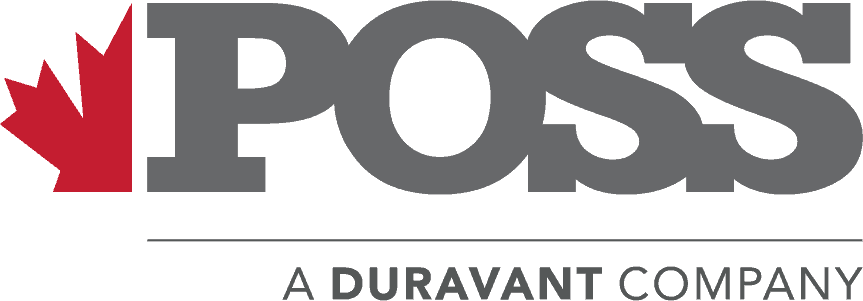The Duravant family of operating companies serve the food processing, packaging and material handling segments.
Safety and Ergonomic Tips
The importance of workplace safety around your operation is paramount and let’s not be reminded of the costs involved in having a workplace accident. Research shows that musculoskeletal injuries are the leading causes of workplace injuries. Conveyors can help reduce that risk by eliminating the need for repetitive lifting and carrying heavy loads. However, if your conveyor is not configured correctly, it may contribute to the onset of these types of injuries. Below are some safety guidelines to follow when working with any of our conveyors to ensure that you and your employees are safe all the time.
- Operators shall receive training by the employer on proper equipment operation of this conveyor.
- Do not exceed the conveyor load capacity, as it may result in possible operator injury or conveyor damage.
- Long hair must be tied back and operators should avoid wearing excessively baggy clothing that could get caught in the system.
- Broken or worn parts must be replaced immediately to ensure the conveyor system remains in a safe, proper working condition.
- To extend or contract a flexible conveyor, unlock all locking casters and use the handles located on the legs.
- To move a flexible conveyor to a new location, unlock all locking casters and use the handles located on the legs.
- Lock all locking castors to prevent movement during use, once the conveyor has been positioned in the desired location.
- Do not place fingers and hands between rows of skates or between side links that make up the scissor action on the sides of the flexible conveyor.
- Always use a dock plate or dock leveller when moving conveyors on castors into and out of the trailer. Always pull the conveyor onto the trailer from the front; never from the sides.
- Always use genuine FMH Conveyor parts. Our parts are specifically designed for FMH Conveyor equipment to provide optimum performance and safety.
- Frequently clean the conveyor to prevent accumulation of debris or accumulation of material that may cause malfunctions or poor performance.
- Never operate conveyor without all of its components and safety mechanisms.
Are you interested in this product?
We are here to help.
SAFETY AND ERGONOMIC FAQS
Q: How do the legs adjust on the BestFlex gravity conveyor?
A: The BestFlex conveyors have adjustable legs that use a hand knob on each leg located near the castor. To adjust the height of the conveyor, loosen the hand knobs and raise the conveyor to the desired height. Tighten the hand knobs securely. For best results in adjusting the conveyor height, set the highest-end first and work down to the lowest end. To lower conveyor height, loosen hand knobs. Avoid placing hands on the inner legs when lowering the conveyor.
Q: When are larger castors recommended on flexible conveyors?
A: The larger or semi-pneumatic castors are recommended when conveyors are used for loading and unloading trucks. Whenever the flexible conveyor is used in dock areas to go over dock boards or dock levellers, the larger castor will withstand the impact and assist in moving the conveyors into and out of the truck with less effort.
Q: How many brake casters are on the flexible conveyor?
A: Standard flexible conveyors include brakes on the castors on each end and every third leg along the length of the conveyor. Additional brakes can be added as requested.
Q: Do I need additional brake castors on flexible conveyors?
A: Additional brakes castors will assist to secure conveyors while configured in a curve.
Q: How are packages stopped at the end of a flexible conveyor?
A: A Drop-down Package Stop or Roller Stop/Connector can be fitted to all BestFlex and PowerFlex conveyors.
Q: Do I need curve guards on a BestFlex gravity conveyor?
A: BestFlex gravity conveyors are self-tracking around curves. Most applications do not require side rails or guides. If a package has a smooth, low friction bottom surface, such as a plastic tote, side-guides may be required.
Q: How do you open, close and move the BestFlex gravity conveyors?
A: To open or extend the conveyor the operator should use the handles provided.
Q: How many people are required to open, close, or move the flexible conveyors?
A: The BestFlex gravity conveyors can be opened or closed by one person if the opposite end of the conveyor is fixed in place by connectors to another conveyor or if the brakes on this end are engaged. To move a BestFlex gravity conveyor, unlock all locking casters, then close or contract the conveyor completely. Longer length conveyors may require the assistance of an additional person.
Q: How are the flexible conveyors packaged for shipping and is assembly required?
A: Most of the conveyors are simply rolled onto the truck for shipping. Basic protection is provided using stretch wrapping. Special packaging may be required for long-distance shipping.
Q: What heights are available for the powered conveyors?
A: The standard heights range from 800mm to 1100mm, depending upon the model. If the elevation needed for your application is outside of this range, please consult your sales representative for more detailed information.
Q: Why choose the MaxxReach?
A: Our MaxxReach telescopic conveyors provide the highest level of safety, ergonomics and productivity for large volume, shipping and receiving applications. The conveyor is effortlessly powered into and out of the trailer by a single operator with a simple push of the button.
Q: What safety features are included in the standard MaxxReach.
A: The MaxxReach provides exceptional operator protection through a number of features including:
- Emergency stops located on the operator control panel and the main control panel
- An extension stop bar located at the operator control panel, automatically stops the conveyor upon impact
- Brushes between each moving telescopic stage.
- Stationary end caps for both the head and tail pulleys eliminating exposed, rotating surfaces.
- Pop-out roller located at the operator end of the conveyor to eliminate entrapment.
- Dual headlamps to illuminate the inside of the trailer
- Custom control panel built to EC standards.
Q: What accessories do I need to unload trucks with large, heavy, floor loaded items?
A: For floor loading or unloading of large, heavy items such as bags of seed, carpet, or drums, we would recommend our articulating belt conveyor that lowers the conveyor belt to within 200mm of the trailer floor enabling safe and easy product handling.
Q: What is the best way to allow our operators to safely load trailers from floor to ceiling?
A: The MaxxReach can be fitted with hydraulic tilt and a man-rider platform to raise and lower the operator to the optimal working height within the trailer. A variety of options may be added to this system for additional ergonomic and productivity enhancements.
Q: How easy is to extend the MaxxReach into the trailer? How many people are required?
A: Unlike floor rolling conveyor systems, the MaxxReach effortlessly telescopes into the trailer at the push of a button by a single operator, never touching the trailer floor.
Q: What is the working belt height of the MaxxReach conveyor?
A: The MaxxReach conveyor is designed with an ergonomically friendly 30” – 34” operational height.
Q: What safety benefits does BestConnect offer?
A: The way the BestConnect conveyor system is designed allows warehouse personnel to sort packages faster and easier which means the amount of lifting or carrying heavy packages is minimal. The main cause of injuries is musculoskeletal. The BestConnect helps to reduce those workplace injuries.
Q: How is the BestConnect ergonomically designed?
A: The conveying system can incorporate electronic flow control. Build back and die back controls cause the motors to sequentially shut down as the system becomes full preventing packages from accumulating and falling on the floor. The zoned flow control (ZLP) only allows each package to proceed when the downstream zone is empty.










